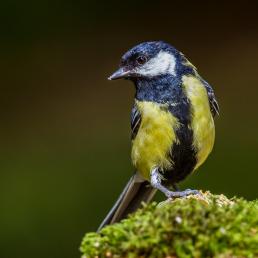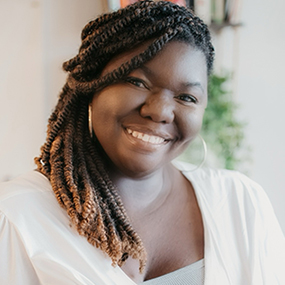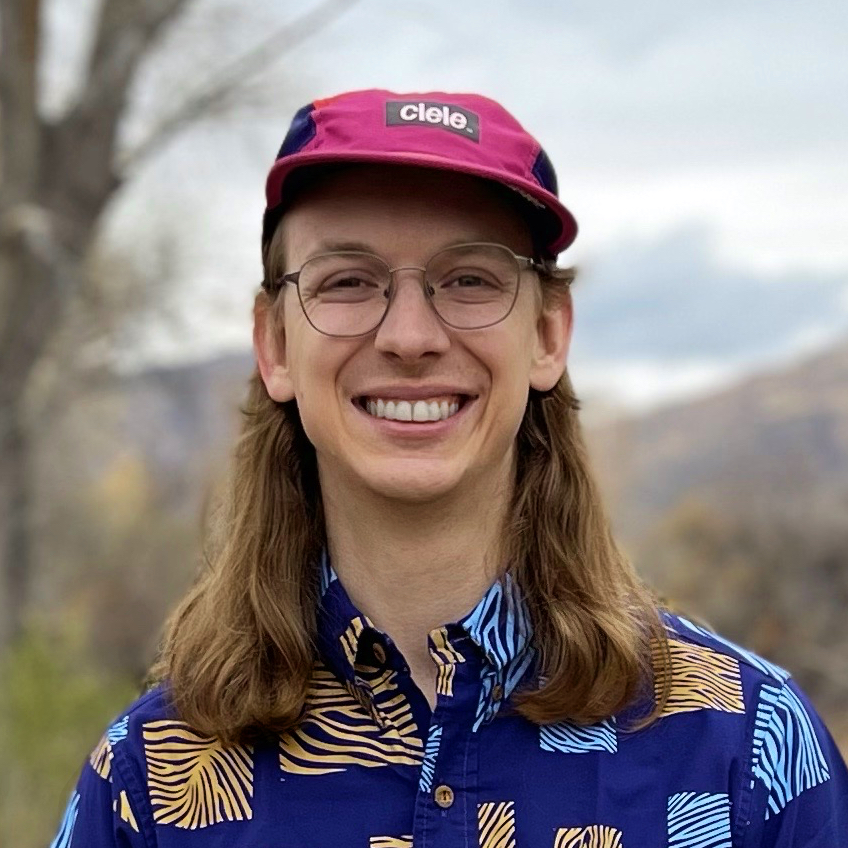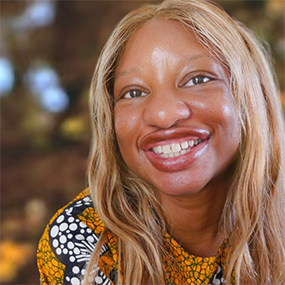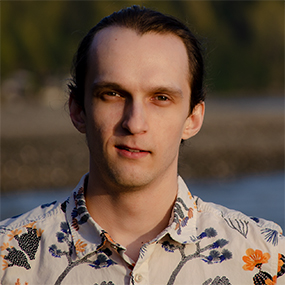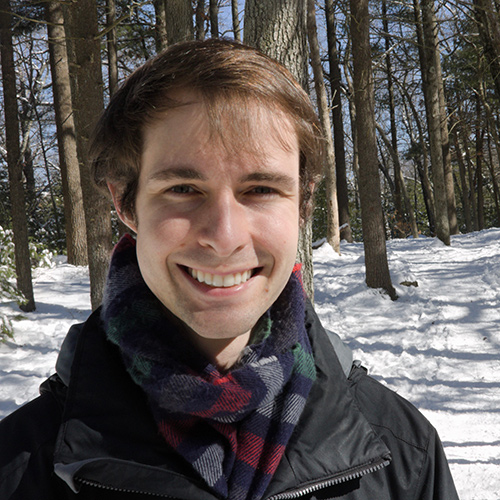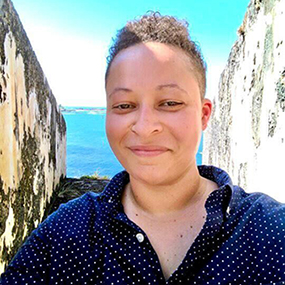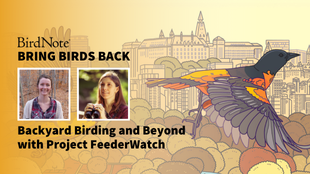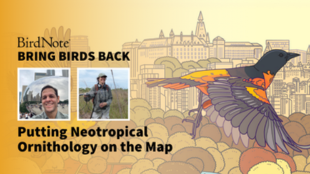

Join BirdNote tomorrow, November 30th!
Illustrator David Sibley and actor H. Jon Benjamin will face off in the bird illustration battle of the century during BirdNote's Year-end Celebration and Auction!

Nature author, photographer and self-taught birder Dudley Edmondson shares how embracing the great outdoors as a child changed his life for the better. With over 30 years of experience, Dudley has dedicated much of his career encouraging Black and Brown people, especially, to venture into nature as refuge from daily societal pressures and microaggressions. In detailing why he’s so adamant about advocating for more representation in the field, he also speaks to improving mental health with more solitary time amongst our chirping friends. Tune in!
More info and transcript at BirdNote.org
Want more Bring Birds Back? Follow us on Instagram! For more BirdNote, subscribe to our weekly newsletter. For ad-free listening and other perks, sign up for BirdNote+ here.
BirdNote is a nonprofit. Your tax-deductible gift makes these shows possible.
Bring Birds Back Season 4 is sponsored by the Cornell Lab of Ornithology.
[BirdNote Presents]
Tenijah Hamilton: From BirdNote, this is Bring Birds Back. I’m Tenijah Hamilton.
What does nature mean to you? Not just like, what kind of landscape comes to mind, but emotionally. For a lot of folks, it brings a kind of zen or peace. Others get super amped and joyful when they’re out birdwatching. For my guest today, Dudley Edmondson, nature is a reminder that he belongs.
Dudley’s career as a writer and nature photographer, and so much of his life, are a testament to his reclamation of nature as a refuge for Black and Brown folks. More than anything, he wants that same sense of refuge he finds in the great outdoors to be available for everyone — to inspire more people of color to go outside and find what nature means to them.
We talk about how he came to love nature, his start as a self-taught birder, and the long-lasting impact of his work. Let’s dive right in…
Tenijah Hamilton: Hey Dudley, how are you?
Dudley Edmondson: I'm doing great. How about you?
Tenijah Hamilton: I'm pretty good. Can you just, um, introduce yourself for our audience?
Dudley Edmondson: Yeah, so as we mentioned, I'm Dudley Edmondson. I live in Duluth, Minnesota. I moved here 30 plus years ago to be a nature photographer.
I was so intent on it that I actually bought a house below Hawk Ridge Nature Reserve so that I could easily get to Hawk Ridge to photograph birds of prey in flight.
At the time, I was — I'm still kind of crazy about raptors. Uh, we get really amazing Broad-winged and Sharp-shinned Hawk flights in September.
And then, in mid October, you get big flights of Bald Eagles and Goldens, and all the buteos come through.
So I just felt like I had to live underneath the ridge so that I could sit on my back porch and watch hawks fly by.
But, uh, in addition to that, I've written a few books, I’m working on a new book. I do video production and of course I'm a photographer and I do speaking engagements around nature conservation, diversity in the outdoors and things like that.
Tenijah Hamilton: You do a lot of different things, but, it's really awesome to see kind of the concentrated impact in some of the books you've done, the photography you've done, and I think, honestly, just existing as a Black person out in this field and as somebody who raises the profile of Black birders. Um, so I cannot wait to dig into all of that. So today you're known as a very prominent Black birder and photographer, author, champion of diversity, all these things. Can you take us back to the beginning? How did you get into birding?
Dudley Edmondson: Yeah. Yeah, that's a really good question. My high school art teacher was a really seasoned birder. He was also a very good artist, and being in his art class, was drawing birds and things. And he just decided, uh, is anybody interested in forming this bird club?
Uh, and his parents were seasoned birders. Uh, there's a Rio Grande Valley Birding Festival down there. And his parents lived in the valley.
Our senior year in high school, myself and three other students, we wanted to go to the Rio Grande Valley, so we sold lollipops and frisbees at a high school to other high school students to raise enough money to have some gas money.
And we did go down. We went down looking for Whooping Cranes and a bunch of other stuff. But he really got me into birds.
The thing that really got me about him is how he could ID birds with just a little glimpse from like, what seemed like miles away, he'd go, oh, Crested Caracara. I'm going like, you lying man. That ain't no—
Tenijah Hamilton: Ain't no way. Ain't no way.
Dudley Edmondson: It's like, how did you do that? That really intrigued me. And I became super fascinated a lot with his ability to ID birds with little to seemingly no information. And now, 30 years later, I do that. And you know, it was a skill that takes time to get. And then sometimes you don't even know the data — I was talking to a birding friend of mine who was in town, and he and I have been birding for about that same length of time, 25, 30 years together.
[Inquisitive music starts]
But I was saying sometimes you don't realize how much bird data is in your head and in your memory banks until something fires it. And so we were walking through the woods here in northern Minnesota, boreal forest area. But we heard a sound that sounded exactly like a Mourning Dove, bursting off of a branch or off the ground flying away, you know, that little whistle sound in their wings.
[Mourning Dove’s take-off whistles]
But we both knew that's not what it was, because of where we were. We knew it couldn't have been that. I mean, it's pretty cold up here and I can't imagine that a Mourning Dove would be in a spruce bog forest, sitting around. But what it was is that our brains knew that sound, even though we knew it wasn't the bird. And brains were able to say, that sounds like a Mourning Dove.
I've been birding about 40 years. 40 plus years. And so, there's just a lot of information up there that you forgot you knew until something fires it or triggers it.
And so I don't know if I completely answered your question, but you, you fired and triggered some other memories for me.
Tenijah Hamilton: Absolutely. I mean, like I said, as somebody who is a relatively new birder, newer than 40 years, it's really interesting to see how those kind of like thread for you. How those kind of interconnected memories jog other memories. And you can kind of— and I don't know, I'm somebody who I also cannot imagine ever being at a place where I can bird by ear.
Dudley Edmondson: Oh you'll, you'll get there. I guarantee you you will get there. Yeah.
Tenijah Hamilton: So listening to you say like, yeah, I had this teacher and I thought it wasn't real, but then I can do it, I have hope now. I have a renewed sense of hope.
Dudley Edmondson: Yeah. It's amazing. I mean, another skill you will probably acquire, which is sometimes hard to explain to people, but how you can be birding by ear and birding by sight at the same time.
It's almost like there's a level of depth in birding by ear where it's like there's layers of birds. There's birds that are really close to you. There are birds that, half a distance from you. And then there are birds way in the distance.
Like that Blue Jay could be relatively close, but that horned owl could be on the other side of the river. And so that Blue Jay because he's so close, he could almost drown out the horned owl.
So to be able to get all of those birds and then still be able to get the visual birds that are in front of you in the field, in a meadow or whatever. And so, it's some really weird skills that you will acquire if you continue to bird.
[Music begins fading out]
Tenijah Hamilton: It's kind of like you're siphoning sounds. Like you're kind of compartmentalizing them by distance. What you hear here, what you hear kind of across the way. And that's very, very cool.
So some of my other birder friends, people that I think we both know, I'm thinking of folks like Nicole Jackson and Deja Perkins, who we actually had on the show last season, I know they've talked about using nature and birding as a way to heal through different things and different experiences. And I, I briefly heard you describe the ways that birding and nature in general helped you as a child, and particularly coming from a difficult household. Can you share more about how it helped you and brought you to where you are today?
Dudley Edmondson: I've always felt that, once I discovered it, that nature had healing powers, both physical and mental. It's very therapeutic.
And I feel like, as a young kid growing up in a household with, you know— my parents, argued and bickered a lot.
And I think some of it had to do with just being Black and growing up in the sixties, fifties. I mean, and for them, obviously decades before, it was tough in America, not unlike today.
So, I think that was part of the reason they quarreled and drank. But I felt like I needed some kind of escape from that space. And I found it in nature. I mean, I wasn't a birder until high school, but when I was in elementary school, in junior high school, I collected insects and fish, and plants.
And my bedroom as a kid was kind of like a jungle, I had aquariums with, I went fishing and caught some crappies or bluegills or something and brought 'em home.
I had praying mantises. I would feed them grasshoppers and crickets and things like that. But yeah, if I was short on insects, I would give 'em a piece of my bologna sandwich. But you know, as a kid I just needed some kind of escape. and, when I was at home and couldn't get out, then I would go to my bedroom and I'd, yeah, I'd turn on some jazz and I would play with, my different, uh, animals and insects and things like that, and just kind of drowned out those things that were happening that were, unpleasant to me. And so, yeah, that was kind of how it happened.
And I decided that I wanted nature to be a part of my life for the rest of my life. But also, much later on I discovered I wanted to try to introduce other people to, to nature, and particularly people of color and Black folks in general, because I know that we have higher levels of stress than most people in America, as people of color. but African Americans in particular. And so I felt like there was some therapeutic components to connecting to nature that could help us with those daily stresses. And so that became something that I wanted to do. The thing I've realized is that you can tell people all day how healing nature is, but until people actually experience it, go out and, you know, get in it and have a life changing experience, it just doesn't really, uh, quite register for them. So I like introducing people to nature as, as often as I can.
Tenijah Hamilton: That was definitely my experience. Um, but I still, you know, I grew up in New York City for a lot of my formative youth, and so, trees and vastness kind of sends off some alarm bells for me. But when I hear you speak about your relationship with nature and how it sounds like it was kind of restorative for you in a lot of ways. It gave something back to you in the ways that, where you, where you had some lack, where you needed some extra support. And I think that's beautiful, and that's what I think is kind of a uniter when it comes to nature and outdoors, and why everybody should have access to it and, you know, urban areas and green spaces.
Dudley Edmondson: Yeah, I sometimes try to convince people, doesn't work all the time, but, what I try to convince people in terms of safety concerns in the outer doors because of, you know, the history of systemic racism in this country and violence against African Americans and things. And, but what I try to get people to understand is that the fewer people that are sharing the square miles around you there are, the more safe you are.
[Soft, relaxing synth music plays]
Dudley Edmondson: And that's just something that most people don't think about. And they think that if they're in the woods all by themselves, they get terrified and they're scared and they think they're unsafe. And it's like, no, really that's the safest place you could be because there's no one there but you.
And that's why sometimes I've been quoted as saying, that wilderness is really the true freedom, because you're away from people and you're, in some cases, you're kind of away from the human constructs of you know, laws and, and even the way people perceive you. If you're in the woods, those brook trout don't care what color your skin is. Those, those, uh, white-tailed deer don't care. But the guy on the other side of the street might have a problem with you, or that cop driving by might decide to give you crap if you're in a city. So being in the outer doors can be one of the safest places you could ever be. And it's just because people aren't there.
Tenijah Hamilton: Very interesting perspective that I don't think we've heard a lot on the show and I definitely understand how you got there.
So you are from, originally, Columbus, Ohio, is that correct?
Dudley Edmondson: Yep!
Tenijah Hamilton: And I, I know you mentioned it a little bit when you were talking about growing up and something I think about is, you know this line, and I'm sure you've heard it before, "you can't be what you can't see."
Dudley Edmondson: Mhm. Mhm
Tenijah Hamilton: Right? Where it talks about representation. And luckily, I think there's a whole new generation coming up who have representation of people like yourself to look up to, who have kind of laid a foundation. But you didn't necessarily have that. But here you are, a self-taught birder by eye and ear. So how did you cultivate these skills?
Dudley Edmondson: Well, most of it is just time in the field. Studying reference material. I spent a great deal of my career as a professional nature photographer, photographing encyclopedias and field guides to birds, around the world actually. But I mean really, it's: the more time you spend at it, the better you're gonna get.
And then at a point, probably way before that, I came to the realization that connecting to the natural world was so important to me, I wasn't gonna let anything or anyone get in my way. And the other part was I said, well, you know what? I pay taxes. Public land belongs to me.
Public land, whether it's a national park or wildlife management area or a refuge, all of those places belong to me as they do to everyone else. There is no sign that says, Black and Brown people are not allowed.
So you go and you do. Accessing those spaces was so important to my mental and physical health, I refused to let anything or anyone get in my way. I mean, in some ways, it's almost insulting to me that anyone would even think try to prevent me from going to these spaces. and so that's kind of been my mindset. I'm gonna go to these spaces because I know they belong to me, and there's nothing that you're going to say that would change my mind about that. So I do what I do.
And I did not have any outdoor role models who looked like me. But it was really just: once I fell in love with the natural world, that was it. So that's kind of what continues, even, to push me. And I encourage people to challenge people who challenge them. Because if we don't challenge, we end up living in a much smaller world. And I refuse to let anyone make my world smaller.
Tenijah Hamilton: After the break, we’ll hear how Dudley ended up at Plan C for his career, what it really means to make the outdoors accessible to everyone, and the intention required to find nature wherever you go. BRB!
[Music ends]
[MIDROLL]
Tenijah Hamilton: So, we get a little bit of your trajectory and how you ended up as a birder. And mentioned wildlife photography as being kind of your stepping stone, but how did you even get there? Because I, first of all, don't know that many people who get to do something as cool, professionally. Um, and I don't know if it ever crossed my mind, really, that this was something that a lot of Black folks did. And so I don't know if they do or they don't, or there's a, a whole, a whole gaggle of y'all in the professional, um— yep. I know. I'm looking— I'm on fire today with my bird puns. I don't know what's going on. Um, but I would love to hear how you got there. How you became a wildlife photographer.
Dudley Edmondson: I mean, I had a couple of plans. Plan A was wildlife biologist, plan B was game warden and probably wildlife photography was Plan C.
Tenijah Hamilton: What's a game warden?
Dudley Edmondson: Game warden is kind of like a sheriff, state trooper. They end up catching poachers and, you know, illegal hunters, checking people's licenses and trapping permits, et cetera, et cetera. But, you know, I just wanted to be close to the natural world. And then with the wildlife biology, I realized there was a potential I would end up sitting at a desk too much, which was not something I wanted to do. But also I just was never like a math whiz. I'm more of a citizen scientist than I am, uh, the other.
And I also, the other part of it was I needed to be creative. Creativity is a major part of who I am and I don't know how creative a biologist or a game warden, you know, could be, unless let's say they were doing field study drawings or something like that. And so that, turned it to plan C for me. Nature photography became the art component, and I was still able to connect with the natural world, through the experiences of gathering photographs.
So that's kind of how it started. And then I moved to Minnesota in the late eighties, early nineties, and, was lucky enough to, after about three or four years, run into an author who was writing field guides at that time. He started with birds. And I don't know how he found me, but he asked me to photograph his books, and we became friends. And he eventually learned photography from me. Then I just decided I wanted to go a different direction and start writing my own books. And so we, we kind of went our separate ways for a while. Now he's working for me, as my drone pilot and sound recordist when I do video production work for clients. He certainly started my career, and now I'm kind of trying to pay him back by hiring him. So that is a lot of fun.
Tenijah Hamilton: It seems like it, and it really set you up to do some really incredible things in the photography and the book world as you began writing your own books, I think in the 2000s. And, um, you authored the book Black & Brown Faces in America's Wild Places.
Dudley Edmondson: Yeah.
Tenijah Hamilton: Which is a very fun title. Just, you know, I love a little, love a little rhyming situation. And that was 2006. I would love to hear you talk about your desire to see more Black and Brown folks in nature and discover nature. And I know we've hit on this a little bit, but what drove you to create that book?
Dudley Edmondson: It was an attempt to create a set of outdoor role models for African Americans across the country so that they could see people. We talked about that a little earlier, about, you know, you can't see yourself doing something you can't imagine. And so, it was me trying to put a set of African-American role models in front of African-Americans in the hopes of getting them to be able to connect to these people through — for me, all Black people feel like family. You know, and, uh, it's just a matter who. Is that my uncle, is it my sister, my cousin, who is that? And so I feel like that could be helpful in the book as far as: these people were giving positive messages about conservation and connecting to nature, but in them, you could also, see a relative, and so therefore that message potentially would get across to folks.
Tenijah Hamilton: I've looked through a couple pages. I remember seeing, um, a woman who was like scaling a mountain, I don't know my geological terms. Um, but it looked very intense. But I was like, go girl. I was like, I love that for you. I'm so proud of you. Like, it gives you a kind of a swelling of pride. That book feels like a labor of love.
[Jazzy, bouncy piano music starts]
Dudley Edmondson: It was both that and a bit of soul searching. Because I felt like I didn't really know anybody who looked like me that enjoyed nature as much as I did. And so, the book was kind of that. Four years of traveling the country to find other Black people who loved nature.
And then, as it got rolling, they were making connections for me. Oh, you should, see my friend, Chelsea Griffie, she's a rock climber and, you know, she introduced me to Shelton Johnson, who's the park ranger at Yosemite. And so, recommendations and people, just kind of helped me with the whole thing.
A dear friend, Nina Roberts is also in the book, and I know she recently lost her battle with pancreatic cancer, in the last year or so. But she was really instrumental in the book and helping me find folks.
But, uh, yeah, it was just me trying to sort of validate my passion for the natural world through finding other people who looked like me in the hopes that they could encourage other, Black folks to get into the outdoors and get those, uh, mental and physical health benefits that I was enjoying.
Tenijah Hamilton: What do you think about the state of diversity in birding today? The experiences, the plight, the community that exists kind of in Black birding and beyond, and do you feel like it's improved?
Dudley Edmondson: Well, yeah, I mean, I remember when Black Birders Week hatched, and things just went sky high with a spotlight on Black birders around the country. And I mean, at one point in my life, I really thought I was the only Black birder in America. Considering I have been birding since 1980, ’82, whatever, most of the time that I went birding, I was certainly the only Black birder, and most of the bird clubs and birding friends were all white. And some of much older age, decades senior to me. There was a time when I just thought that what's going on today would never happen, but I'm so happy to see that it did happen.
And then, almost immediately felt this sense of, okay, now what I have to do is become an enabler, supporter, whatever young, Black and BIPOC birders are trying to do or wanna do, if I have the tools or the skills to help them move that thing forward, I am going to 100% jump in and do what I can. And my function now is to support and help grow things in any way that I can. And so that's kind of where I feel like I am today, with folks like Corina Newsome and Tykee James, yourself. You know, it's like, just help you guys move it forward.
[Music ends]
Tenijah Hamilton: I can speak for me and I'm sure them as well, that we feel so poured into as we are beginning to find our own ways in this space, and grateful that you and others, even if you didn't know they were out there, were able to help us along that road before we even knew we wanted to go down it.
So with that being said, I'm very curious to what advice you might have for youth who maybe don't have a lot of access to natural resources or who come from some of those areas where it might be harder to get to but are interested in birding, potentially are interested in being outdoors. What would you tell that kid?
Dudley Edmondson: Well, I lived right in the heart of the city. There wasn't a ton of green space in my immediate neighborhood. And myself and some other young kids would bike to green spaces. And so, I would suggest that a young person who is interested in nature and the outer doors, if they can't find green space in their immediate neighborhood to maybe put together a little collective of other young people, and get on your bikes or take public transportation and get together and go out and explore these spaces
And it doesn't need to be a, a Yellowstone, Yosemite. I mean, nature is everywhere. and so it can be that abandoned lot across the way or that city park, you know, a mile away. but, exploring and connecting to nature in your immediate community is super important, and can certainly help you to get a better understanding of some of these other public lands that are far afield.
But also, you know, doing as I did as a kid, just bringing nature into your bedroom or to your house. You can find worms and grasshoppers and spiders and crickets and things like that just about anywhere. Yeah, I don't care where you are. I mean, you can be in Times Square and you can find nature there. If you look close enough, spiders and things like that.
'Cause it literally is, nature is everywhere. You just have to be attuned to it and understand that it moves at a different pace than we move. The more you sit quiet and sit still, the more nature you will notice.
And it is literally that kind of thing where I think as humans, as Americans, I mean, we move at really high speeds and we just don't see the natural world. And I think that when you slow down and you pay attention and you sit still, you will find some of the most beautiful and amazing things you've ever seen.
Tenijah Hamilton: That's really beautiful advice for the next generation.
[Hopeful music enters]
Well, Dudley, this conversation has been, um, really incredible and really cup-filling for me. I feel very honored to be able to share space with you in this way, 'cause I feel like I learned so much. And there's so much to learn from folks like yourself and other Black birders and birders of color who have been working really hard to change the way we see this as a hobby, as a conservation piece. As just a way to reclaim our peace and preserve our joy. So I thank you for being here, and um, I can't wait to hear and see what else is in store for you.
Dudley Edmondson: Yeah, I'm honored to be here. I appreciate the opportunity to speak with you.
Tenijah Hamilton: That’s our show today — but if you stick around, Dudley answers some rapid-fire questions in a game of Bird Association!
To learn more about Dudley and see his photography, visit our website BirdNote.org. And be sure to follow us on Instagram @BringBirdsBack for show updates, exclusive behind-the-scenes content and more.
Bring Birds Back is produced by Mark Bramhill, Sam Johnson and me, Tenijah Hamilton. Our fact-checker is Conor Gearin. Our Managing Editor is Jazzi Johnson and our Content Director is Jonese Franklin.
Music is by Cosmo Sheldrake and Blue Dot Sessions
[Music ends]
Tenijah Hamilton: Alright, you ready to play our ‘Bird Association’ game?
Dudley Edmondson: Yeah, yeah, yeah!
Tenijah Hamilton: So what is your most challenging bird to photograph?
Dudley Edmondson: Shoosh. Probably was a Siberian Bluethroat in Alaska.
Tenijah Hamilton: I was gonna say, I've never even heard of that bird. Sounds elusive.
Dudley Edmondson: Yeah, yeah, it's like, uh— crossed over from Russia. It's a Russian species. And they show up in Alaska from time to time. And myself and a few other photographers kind of hung out in this one area by a bush for two consecutive days in a row. And, and the bird came in long enough over those two days for us to each get a single photo, which happened in fractions of a second.
So, super challenging and if you weren't ready, you know, you're eating a peanut butter and jelly sandwich, you might have missed it. You might have missed it. It happened that quick.
Tenijah Hamilton: Stay ready so you don't have to get ready.
Dudley Edmondson: That's right, that's right.
Tenijah Hamilton: Um, ok. not bird-related. So what is the last song you've played in the car? Could be last song or last artist.
Dudley Edmondson: You know, I'm very eclectic in my music. I mean, I listen to everything from Miles Davis to, geez, Snoop Dogg to Chopin, a lot of electronic music.
But I do like The Who — British band. And Uh, like “Behind Blue Eyes.” They're good driving songs, you know, because Roger Daltrey — he's a belting singer in terms of, he screams. They scream a lot. The Who screams a lot. Yeah, they got frustrations. They got, they got pent up stuff. You know, so they, they yell into the microphone a lot. So The Who.
Tenijah Hamilton: Okay. My last question, you live in Minnesota and, arguably, the most famous Minnesotan that I know is, you know where I'm going with this?
Dudley Edmondson: No, I'm slow and old, remember.
Tenijah Hamilton: Is Prince.
Dudley Edmondson: Oh, well, yes.
Tenijah Hamilton: Of course. So my question is, if you had to choose a bird to be an avatar for everything that Prince embodied, what bird would you choose?
Dudley Edmondson: Well, it probably wouldn't be a real bird.
Tenijah Hamilton: Oh, say more.
Dudley Edmondson: Uh, it would probably be a fictional creature that is lavender with a long kind of lyre tail. Almost like a, a dragon crossed with a bird. Uh, yeah, it would be a—
Tenijah Hamilton: Phoenix-y, kind of?
Dudley Edmondson: Yeah. Yeah. yeah. Yes, correct, yes. It would be sort of a lavender purple magical beast. Yeah, it wouldn't be a real bird.
Tenijah Hamilton: I, I love that you took it there, because A, there's always room for creativity and imagination, and B, that makes a lot of sense when you know who Prince was, right?
Dudley Edmondson: Well that's the thing. I mean, he goes beyond the real — at least to me, his skills and his talent was just otherworldly. And I don't feel like there's anything that truly exists that could represent that. So it would have to be fictional. Yeah.
Tenijah Hamilton: I love that.
About guest Dudley Edmondson:
Over the last 33 years, Dudley Edmondson has become an established Photographer, Author, Filmmaker and Presenter. His photography has been featured in galleries and publications around the world. His photographic work and adventure travels have taken him to so many amazing places from the Arctic Circle of Alaska to the Bahamas.
As a young man, Dudley Edmondson discovered the power of nature and its ability to heal both the
mind and body. This led Mr. Edmondson on a lifelong path to follow his passion and instill his love and knowledge of the outdoors in others and inspire a personal understanding and respect for everything nature offers. Mr. Edmondson has collaborated with numerous communities across the county to help urban youth and youth of color to experience nature and the beauty of the outdoors.
Mr. Edmondson was one of the first to highlight the involvement of African Americans in the public
lands system. Unsatisfied with the representation of people of color among those in his outdoor
pursuits, he created a set of Outdoor Role Models for the African American community by writing his
landmark book, Black and Brown Faces in America’s Wild Places (Adventure Keen Publications, 2006). In 2021, Mr. Edmondson created a photography and film exhibit called “Northern Waters,” for the Minnesota Marine Art Museum. He is currently working on his next book, in addition to several film projects.
